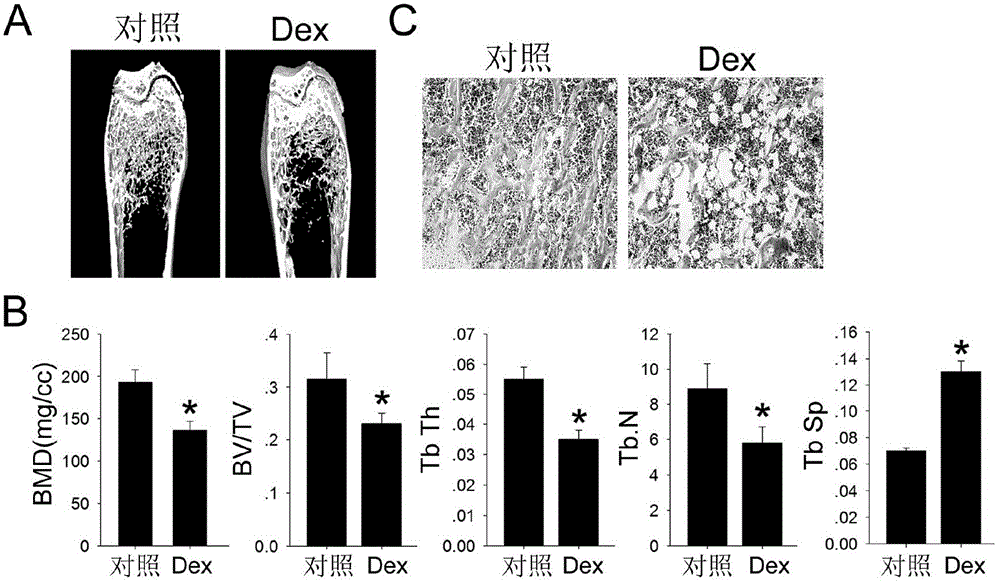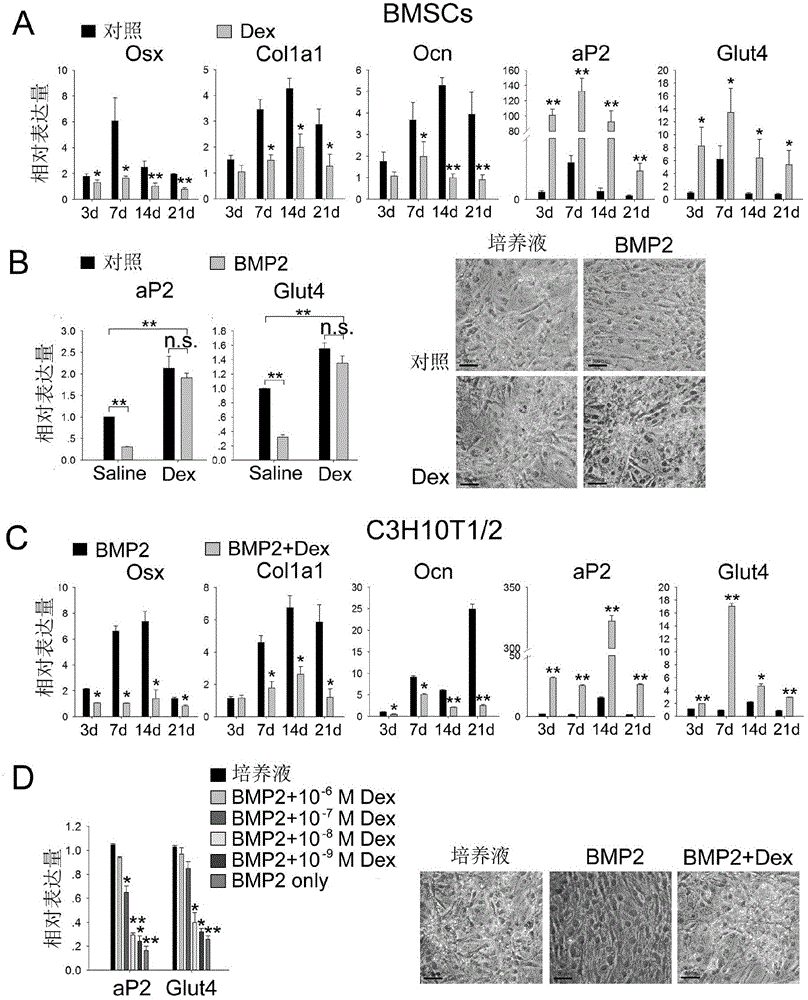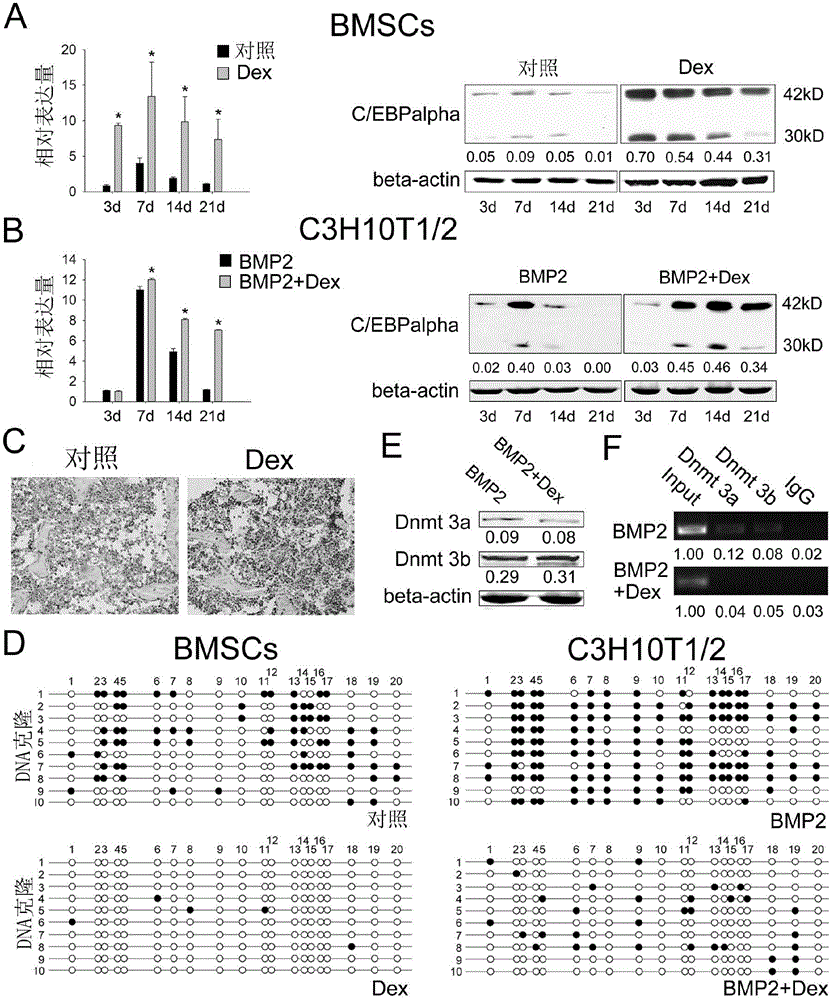Prevention and treatment of bone disease caused by glucocorticoid drugs
A glucocorticoid and bone disease technology, applied in the field of biotechnology, can solve problems such as unclear specific mechanism
- Summary
- Abstract
- Description
- Claims
- Application Information
AI Technical Summary
Problems solved by technology
Method used
Image
Examples
Embodiment 1
[0090] Establishment of Dex-induced osteoporosis model
[0091] In order to explore the mechanism of Dex-induced osteoporosis, in this example, the inventors first established a Dex-induced osteoporosis model in mice. After 6-8 weeks of mice were subcutaneously administered Dex for 5 weeks, the femurs were used for microCT analysis.
[0092] The results showed that the mice treated with Dex had decreased bone mineral density and bone mass, decreased bone trabeculae, and showed obvious bone loss phenotype ( figure 1 A, figure 1 B). Histological examination found that compared with the control mice, the Dex-administered mice not only decreased the density of trabecular bone, but also had a large amount of fat in the bone marrow ( figure 1 C), consistent with the clinical phenotype.
Embodiment 2
[0094] Dex inhibits osteoblast differentiation and enhances the potential of BMSCs to differentiate into adipocytes
[0095] In order to detect whether the differentiation ability of BMSCs in Dex-treated mice is changed, the inventors isolated primary BMSCs from Dex mice and control mice, and cultured them in vitro to detect the osteogenic differentiation ability induced by BMP2. The two groups of BMSCs were induced by BMP2, and the expression of osteoblast-related genes was detected at different time points (3 days, 7 days, 14 days, 21 days) to judge the ability of osteogenic differentiation.
[0096] The results showed that in the BMSCs of Dex mice at different time points induced by BMP2, the marker genes Osteorix (Osx), type I collagen (Collagen type I, Col1a1) and osteocalcin (Osteocalcin, Ocn) were all underexpressed, while In normal BMSCs, the expression of these genes increased with the induction of BMP2 ( figure 2 A). In contrast, aP2 and Glut4, which are related t...
Embodiment 3
[0100] Under Dex treatment, C / EBPalpha factor was highly expressed
[0101] It was previously found that the key transcription factor C / EBPalpha in adipocyte differentiation is down-regulated in osteoblast differentiation, and its overexpression can disrupt the balance of osteogenic / adipogenic differentiation. In the osteoporosis model, it was found that the osteogenic / adipogenic differentiation balance of BMSCs has been disrupted by Dex. This example is used to detect the change of the expression level of C / EBPalpha.
[0102] First of all, the inventors detected the level of C / EBPalpha in the primary BMSCs and C3H10T1 / 2 cells, and found that the mRNA and protein levels of C / EBPalpha factors were significantly lower in the BMSCs of Dex mice ( image 3 A) and Dex-treated C3H10T1 / 2 ( image 3 B) are significantly higher than the control, and maintain this high level in 21 days of osteogenic differentiation. Immunohistochemical experiments found that the protein level of C / EBPa...
PUM
 Login to View More
Login to View More Abstract
Description
Claims
Application Information
 Login to View More
Login to View More - R&D
- Intellectual Property
- Life Sciences
- Materials
- Tech Scout
- Unparalleled Data Quality
- Higher Quality Content
- 60% Fewer Hallucinations
Browse by: Latest US Patents, China's latest patents, Technical Efficacy Thesaurus, Application Domain, Technology Topic, Popular Technical Reports.
© 2025 PatSnap. All rights reserved.Legal|Privacy policy|Modern Slavery Act Transparency Statement|Sitemap|About US| Contact US: help@patsnap.com



